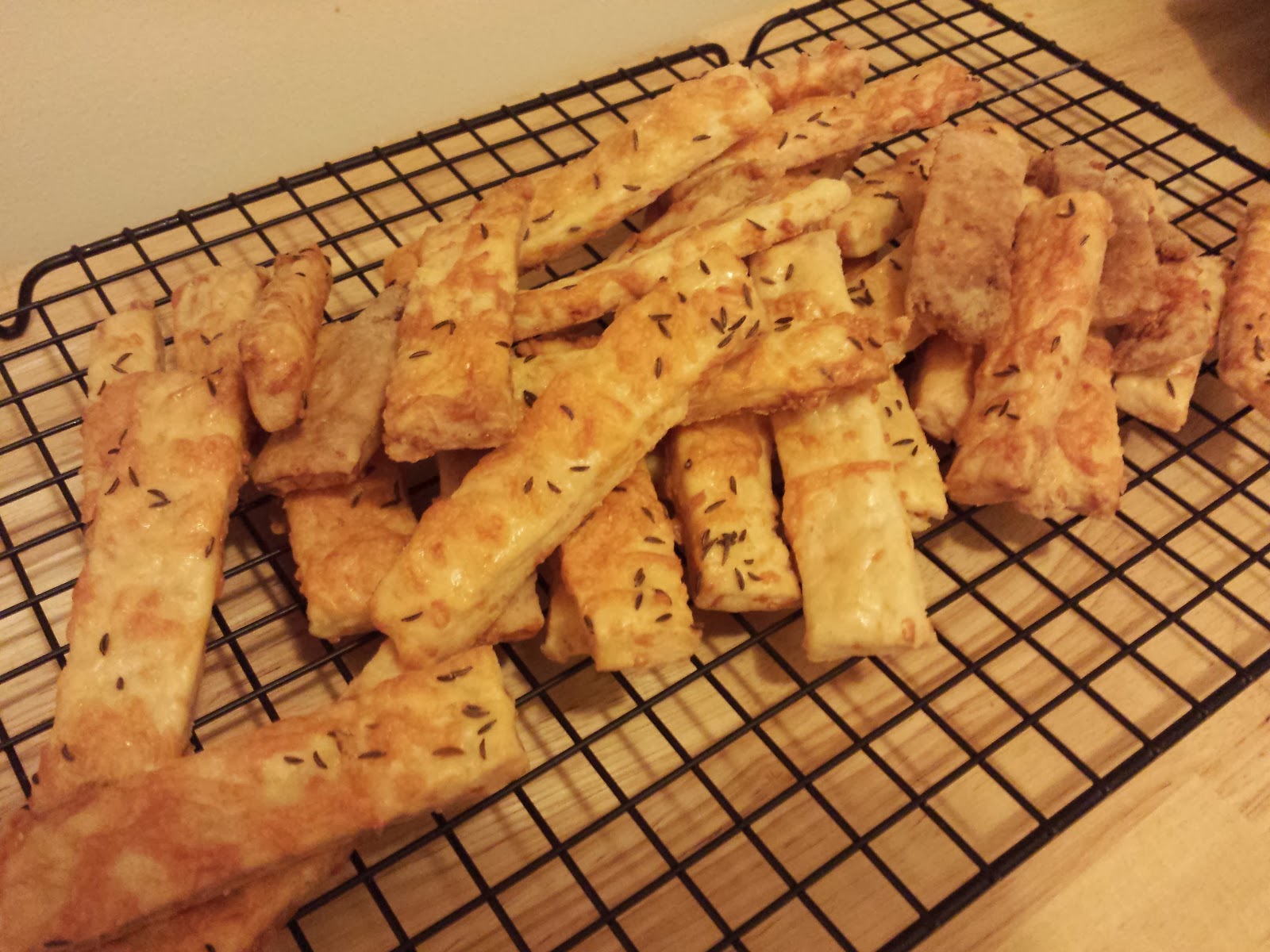Scottish Highland Chuck Roast a la Chartreuse
Now that Pennsylvania is in the deep of winter, I wanted to make a great slow cooked meal using North Woods Ranch’s Scottish Highland beef. For this recipe I used a chuck roast, which is similar to the rolled rump roast, but chuck has a few more muscle groups and a bit more fat. To compare the two, cooking a rump roast will produce thick slices of lean beef, while a chuck roast produces a more traditional pot roast with chunks of tender, moist beef just falling apart.
.JPG) |
| Scottish Highland Chuck Roast |
To start this dish, I sautéed a mix of onions, celery, and carrots with lard in a large, oven safe pot. Once the vegetables had softened, I removed them from the pot and set them aside to make room for the beef. Being a large roast, I seasoned the meat generously with salt and browned it on all sides in the hot lard. Just like the rump roast, I left the netting on while cooking. When the roast was browned on all sides, the vegetables went back in the pot, and I deglazed the bottom with beef stock.
This was where I changed things up a bit from my previous rump roast post. While I braised that roast in wine, I used canned whole tomatoes for this recipe. The tomatoes added a bit of acidity to the dish and rounded out the flavor by adding a rosy hue. I crushed the whole plum tomatoes a bit with my hand, but just enough that the tomatoes are still in chunks.
Topping up the pot with enough stock to cover the roast, I brought the liquid in the pot to a simmer. Once the liquid is simmering on the stove top, the pot gets covered and placed it into the oven. Again, like with the rolled rump roast, I keep an eye on the pot, and slowly turn down the heat every hour or so to keep the liquid at a gentle simmer. This roast cooked at just shy of eight hours, with the last four hours cooking at 275 F.I knew the roast was done when the meat easily pulled away in tender strands with just a fork. I could have stopped there, but I wanted to take it a step further. As I mentioned earlier, chuck roast has several muscles in it. So when the netting is cut away from the chuck roast, the tender meat will neatly fall apart into a few large chunks, naturally separating at the different muscles seams.
There’s an old French tradition called la Chartreuse, which puts the meat in a ceramic mold surrounded by a covering of vegetables. It could be strips of carrot, eggplant, squash, or leafy greens. The dish is finished when the vegetable-swaddled meat is turned out from from the mold and displayed on a dish.
In my version, I blanched the outer leaves of a cabbage until they were tender, then placed the cabbage leaves in small bowls. I filled each leaf with a mixture of cooked, shredded, chuck roast and added a bit of the roasting liquid. Folding the bottoms of the leaves up, I pushed down on each meat parcel to compact it a bit, and tucked them into little ramekins. Then I turned the ramekins over onto the serving plates to unmold the parcels. I finished it off by drizzling a bit more of the braising liquid on top of each cabbage bundle. This also helped to the dish moist. If this sounds like pigs in a blanket, you’re not far off.
.JPG) |
| Braised Chuck Roast Wrapped in Cabbage |
I love Italian gremolata, a finishing touch added to slow-braised dishes. For this dish, I minced together raw garlic, lemon zest and parsley and lightly sprinkled it over the meat (traditionally veal osso bucco). The bright, sharp flavor is a wonderful contrast to the deep, savory flavor of the long-cooked meat. To complete my dish, I dug up a horseradish root from the garden, peeled it, and microplaned a fluffy cloud on top of the cabbages. It looked like a dusting of Parmigiano Reggiano cheese, but it packed a bit more punch. Because it was grated so fine, each bite had a quick “pop!” of horseradish without overpowering the intense, savory flavor of beef.
Recipe at a Glance:
- 3-4lb chuck roast
- 28 oz can whole plum/roma tomatoes
- 2 medium onions, chopped
- 3 carrots, peeled and chopped
- 3 stalks celery, sliced
- 2-3 garlic cloves
- 12-16 oz stock (enough to cover roast)
- 1 bay leaf
- Salt and pepper to taste
- Small knob of fresh horseradish (optional)
Once vegetables are browned, add garlic and cook for one minute. Return roast to pot, along with any juices the roast may have dripped out.
Pour stock into pot and stir up the bottom of the pot to deglaze. Add tomatoes and stock to cover and bring to a simmer on the stove top. Once the stock is simmering, cover pot and place in oven. Braise for 6-8 hours, slowly reducing heat to keep the liquid at a gentle simmer.
Once tender, remove from oven and let rest for 30 minutes or so before cutting up.Peel rind from horseradish and use a fine microplane or grater to garnish with a few fluffy piles of grated horseradish. Serve with roasted squash and potatoes with more of the braising liquid drizzled over.
.JPG)
.JPG)
.JPG)

Comments
Post a Comment